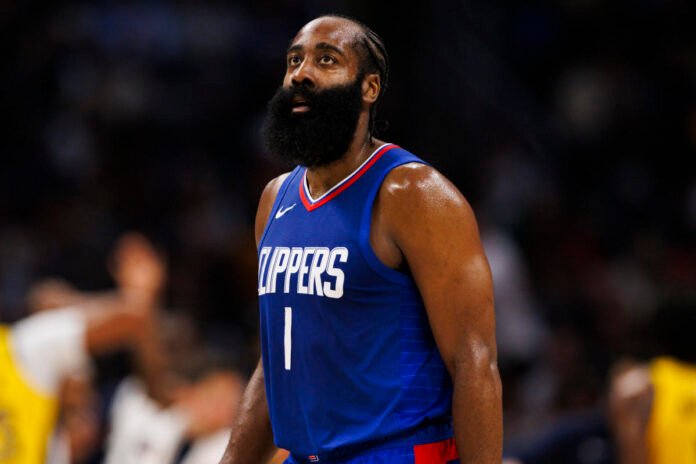There never were any bad contracts in the NBA. Players got paid, and they probably deserve more than the 50% of basketball-related income they have negotiated from the league’s governors. Remember that.
There were ill-advised contracts, at least from a team-building perspective, though there are less of them now. Even Bradley Beal‘s five-year, $251 million contract — complete with a no-trade clause — changed hands. Front offices are pretty smart these days, and the ones that are not get exposed pretty quickly.
Measure these deals not on dollar amount alone. Players should be paid whatever they can negotiate, then some. Measure them instead on this question: Is this deal one a championship team would make?
Remember this, too: Basketball is a sport. Sports are fun. Even the worst contracts are good contracts.
But …
THE 2024 OFFSEASON’S 7 WORST CONTRACTS
-
Contract: 2 years, $70 million
-
Percentage of the 2024-25 salary cap: 23.9%
-
2023-24 (72 games): 16.6 PTS (43/38/88), 8.5 AST, 5.1 REB, 34.3 MIN
-
Advanced: 18.6 PER, 61.2 TS%, .163 WS/48, 4.1 BPM, 3.8 VORP
-
Cost Per Win: $4,166,666.67
In October 2021, Harden declined a three-year, $161 million extension from the Brooklyn Nets, which would have paid him in excess of $55 million this coming season. He hoped to secure a four-year, $227 million deal in June 2022 that would have made him the NBA’s first $60 million man. It never came.
Harden cost himself $62 million over the past three seasons, and for what? Three more disappointing playoff exits. He played a role in each. Consider the $36.4 million he is now owed in 2025-26 restitution for lost wages. Good for him for earning some of it back. But I am not sure how it benefits the Clippers.
Harden’s averages since the 2019-20 season, when at the age of 30 he won a third consecutive scoring title (34.3 points per game) and finished top-three in the league’s MVP voting for a fourth straight year:
-
2019-20 (68 games): 34.3 PTS (44/36/87), 7.5 AST, 6.6 REB, 2.7 STL/BLK
-
2020-21 (44 games): 24.6 PTS (47/36/86), 10.8 AST, 7.9 REB, 2.0 STL/BLK
-
2021-22 (65 games): 22.0 PTS (41/33/88), 10.3 AST, 7.7 REB, 1.9 STL/BLK
-
2022-23 (58 games): 21.0 PTS (44/39/87), 10.7 AST, 6.1 REB, 1.7 STL/BLK
-
2023-24 (72 games): 16.6 PTS (43/38/88), 8.5 AST, 5.1 REB, 1.9 STL/BLK
It is a steep decline, even if he remains one of the league’s premier passers. Whereas once Harden was generating 6.3 at-rim field-goal attempts and 11.8 free-throw attempts per game, he is now attempting two shots per game in the restricted area and 4.8 free throws a night. He was worse in the postseason.
Harden was never a great defender. The Clippers allowed 115.2 points per 100 possessions — equivalent to last season’s 20th-rated defense — when he was on the floor. And he turns 35 years old next month.
I do not know how else to say this: Harden is far from the perennial MVP candidate he once was. He has not made an All-Star team since 2022, when he could not participate due to a hamstring injury that he conceded was the result of arriving to training camp out of shape. He is on his fourth team in four years. This is not going to get better, not with 43,215 career regular-season and playoff minutes on his legs.
When Harden was available via trade last season, nobody but the Clippers made a serious offer, and this is what makes this deal so bad. They traded the rights to three first-round draft picks in order to secure Harden, knowing they were going to give him this contract, despite not competing against anyone serious — then or now — for his services. Nobody else was paying Harden $35 million to play this season.
So, what did the ultra-rich Clippers do? They cried poor, citing the collective bargaining agreement for reasons why they could not possibly re-sign Paul George. You know what they could have done instead? Paid the superior player (currently), kept three first-round picks and never tested the waters on Harden.
Either way, the Clippers are no longer a title contender. For that they get to pay Harden $70 million.
-
Contract: 5 years, $175 million
-
Percentage of the 2024-25 salary cap: 24.9%
-
2023-24 (68 games): 17 PTS (43/40/85), 4.9 AST, 3.8 REB, 29.2 MIN
-
Advanced: 16.7 PER, 57.7 TS%, .115 WS/48, 1.3 BPM, 1.7 VORP
-
Cost Per Win: $7,446,808.51
Quickley is good. He finished runner-up in the 2022-23 Sixth Man of the Year race for the New York Knicks and transitioned into a starting role once he was traded this past season to Toronto, where he averaged 18.6 points (on 42/40/84 shooting splits), 6.8 assists and 4.8 rebounds in 38 appearances.
An average annual value of $35 million does not seem so bad on the surface for a 25-year-old starting point guard who, with some development, could average an efficient 20-5-5 and disrupt on defense. Only, those numbers came on a team that finished 12-26 with Quickley in the lineup. He was a reserve on New York’s roster and struggled mightily in a pair of playoff appearances, shooting just 33.3% from the field.
This is the Quickley ideal — energetic playmaking punch off the bench. That earned a 26-year-old Malik Monk, this past year’s Sixth Man of the Year runner-up, a four-year, $78 million deal from the Sacramento Kings. Quickley will earn $175 million over five seasons. Their averages per 36 minutes this past season:
-
Quickley: 21 PTS (43/40/85), 6 AST, 4.7 REB, 1.1 STL/BLK
-
Monk: 21.3 PTS (44/35/83), 7.1 AST, 4.1 REB, 1.6 STL/BLK
Quickley is now…
Yahoo Sports







